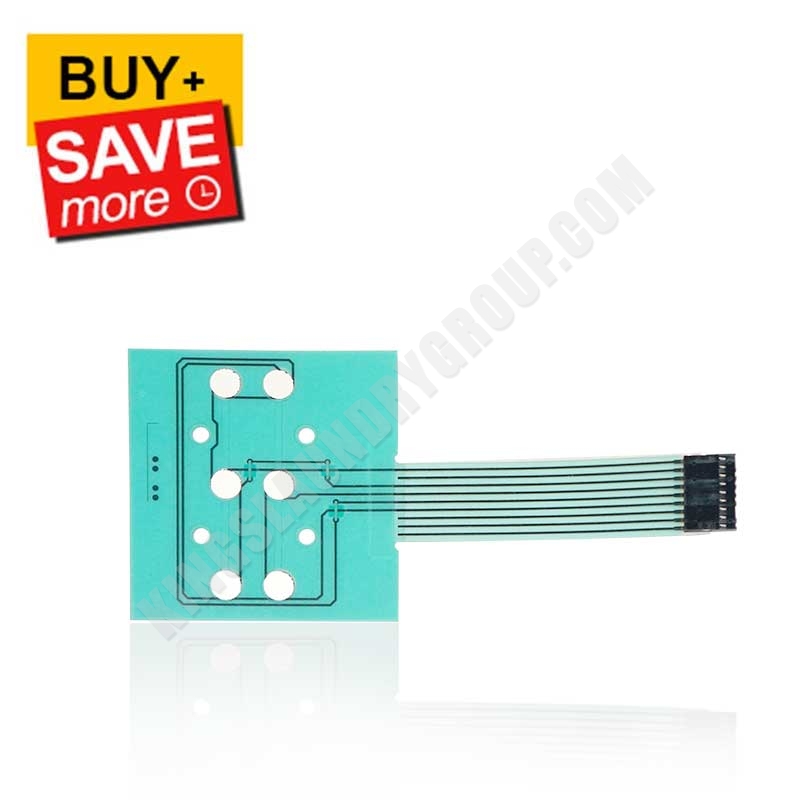Discover Exactly How a Membrane Switch Boosts Resilience and Functionality in Tools
Discover Exactly How a Membrane Switch Boosts Resilience and Functionality in Tools
Blog Article
Exactly How Membrane Changes Contribute to the Longevity of Electronic Control Panels
Membrane buttons play an essential role in boosting the sturdiness of electronic control panels, mainly via their multi-layered construction which supplies effective security versus environmental aspects such as wetness and dirt. The lack of relocating components dramatically lowers the chance of mechanical failures, making membrane switches over ideal for demanding applications.
Meaning of Membrane Switches

Membrane layer switches are developed to be thin and light-weight, making them appropriate for applications where space is restricted. They can be produced in numerous shapes, dimensions, and shades, providing flexibility in design that satisfies visual and functional demands. In addition, membrane buttons can integrate different technologies, such as responsive comments and LED indicators, improving individual experience.
As a result of their building, membrane layer switches are often immune to dust, dampness, and basic wear, contributing to their longevity popular atmospheres. Their seamless style not only facilitates simple cleaning but also reduces the risk of mechanical failing, making them a favored selection for manufacturers seeking dependable interface in their electronic control panels.
Protection Versus Environmental Variables
The layout of membrane switches over inherently offers a level of security versus numerous environmental elements, which is crucial for preserving capability in tough problems - Membrane Switch. These switches are generally built with layers of adaptable materials that secure interior elements from dampness, dust, and contaminants. By enveloping the circuitry, membrane switches lessen the danger of brief circuits and rust, which can considerably hinder efficiency
Additionally, using durable adhesives and sealants throughout manufacturing boosts their resistance to ecological difficulties. Membrane switches can sustain exposure to chemicals and solvents, making them suitable for industries such as food processing and health care, where hygiene and cleanliness are critical. Their smooth surface area style likewise protects against the accumulation of dirt and microorganisms, facilitating simpler cleaning and upkeep.
Temperature level changes are an additional environmental worry, and membrane layer buttons are engineered to operate efficiently across a broad range of temperature levels (Membrane Switch). This adaptability guarantees that control board remain operational in different settings, from industrial environments to consumer electronic devices
Effect On Individual Interaction
Customer interaction with electronic control panels is dramatically influenced by the style read more and performance of membrane layer buttons. These switches give a responsive interface that boosts the overall customer experience, permitting user-friendly navigating and control. Their responsive nature guarantees that customers get immediate feedback upon activation, which is crucial for jobs requiring accuracy and effectiveness.
Moreover, the smooth surface area of membrane changes assists in simple cleaning and upkeep, advertising customer self-confidence in the reliability of the user interface. This cleanliness is specifically important in atmospheres where hygiene is critical, such as medical or food handling settings. Additionally, the small and light-weight layout of membrane switches over adds to the aesthetic charm of control board, encouraging user involvement via a contemporary and streamlined look.
Furthermore, the assimilation of aesthetic aspects, such as printed symbols and backlighting, assists individuals quickly identify features, decreasing the discovering curve linked with brand-new equipment. Therefore, customers can run tools much more effectively, bring about raised productivity and satisfaction. In recap, membrane layer switches play a pivotal function in improving individual interaction by incorporating performance, aesthetics, and simplicity of usage, eventually leading to boosted functional effectiveness.
Layout Adaptability and Customization
Layout adaptability and customization are important facets of membrane layer switches, enabling suppliers to tailor digital control board to particular applications and individual requirements. This adaptability enables the assimilation of numerous layout elements, such as colors, graphics, and appearances, which can improve the visual allure and user interaction of the control board.
Membrane layer buttons can be tailored in size and shape, suiting a wide variety of gadgets and applications, from industrial machinery to customer electronics. This versatility ensures that manufacturers can develop intuitive interfaces that align with customer expectations and functional demands. Furthermore, the capability to include distinct features such as backlighting or tactile feedback further enhances use, enabling a more interactive experience.
Moreover, the manufacturing process for membrane layer changes supports the fast prototyping of layouts, making it possible for makers to iterate and improve their principles quickly. try this website This ability not just speeds up the growth timeline yet also makes sure that the end product meets particular practical and aesthetic criteria.

Cost-Effectiveness and Durability
Cost-effectiveness and durability are considerable benefits of membrane layer switches, making them an eye-catching alternative for producers and end-users alike. These switches are generally cheaper to create than traditional straight from the source mechanical switches, mainly as a result of their simplified manufacturing processes and the lowered number of components needed. This cost benefit prolongs not only to first production yet also to lasting functional expenditures, as membrane layer buttons often require less upkeep and have a reduced failure price.
Furthermore, the durability of membrane switches over contributes to their overall worth. Created from resilient materials, they are immune to ecological elements such as moisture, dust, and chemicals, which can lead to premature wear in other button types. The lack of moving parts minimizes mechanical failure, allowing membrane layer switches over to preserve functionality over expanded durations.
This durability is especially advantageous in applications calling for regular performance under requiring problems, such as medical devices and industrial devices. Eventually, the combination of cost-effectiveness and durability makes membrane layer switches an economically viable option for makers, offering reputable remedies that withstand the test of time while enhancing monetary considerations.
Conclusion
In final thought, membrane buttons significantly improve the longevity of digital control panels through their durable building and construction and safety functions - Membrane Switch. Overall, membrane changes represent a reputable and cost-efficient selection for boosting the longevity and performance of digital control systems.
Report this page